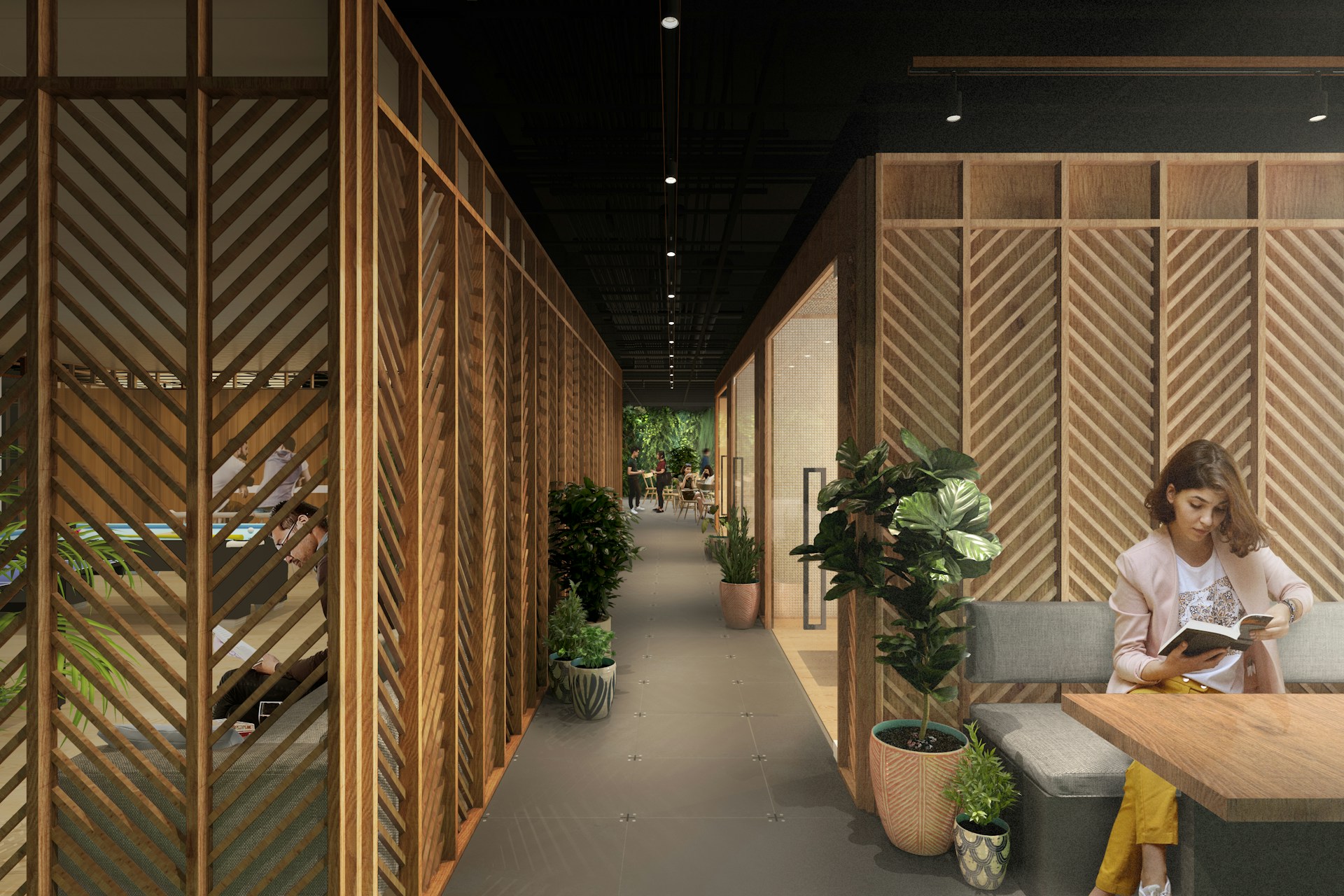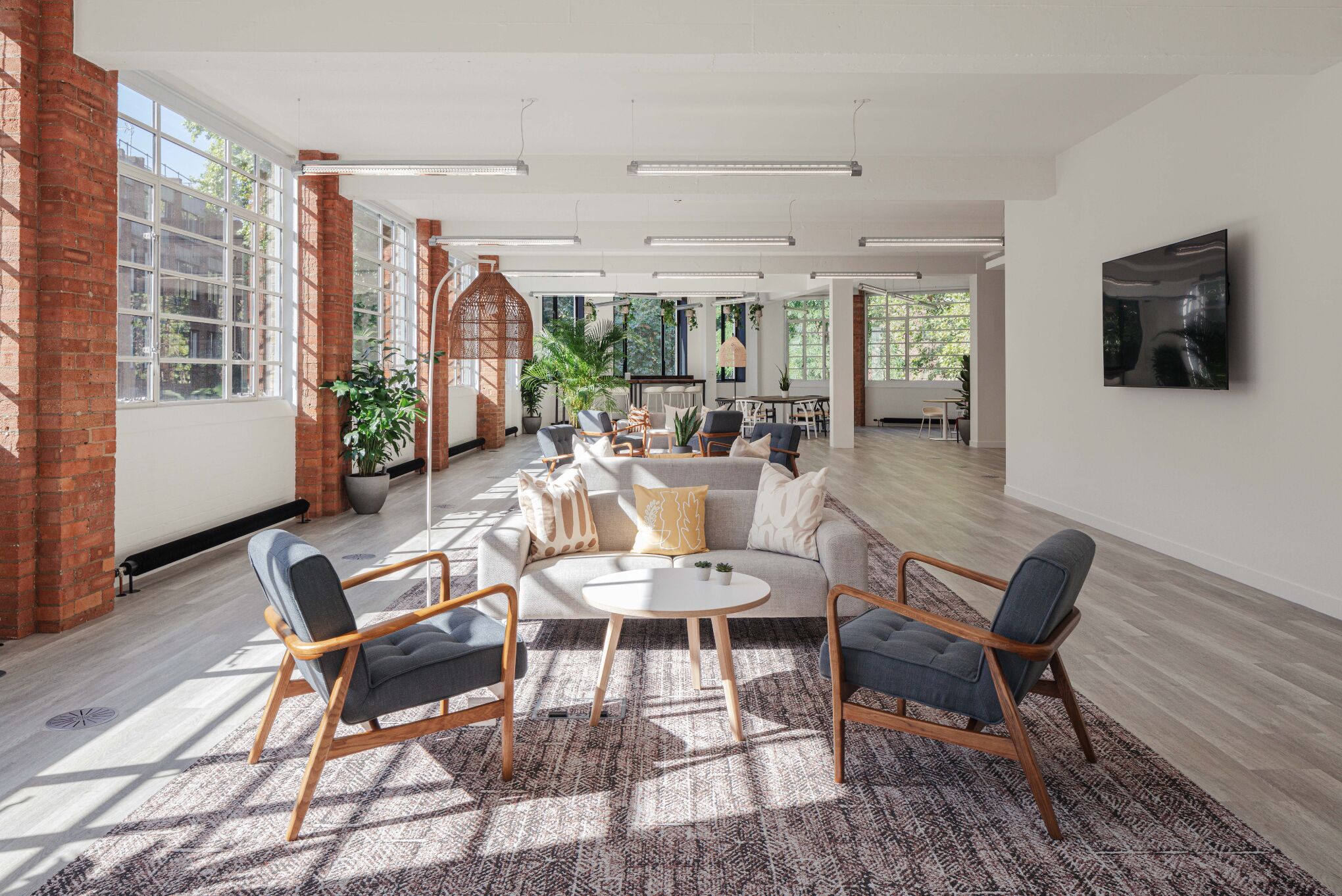In today's evolving workplace, creating an inclusive office space is crucial. Explore our comprehensive guide on what makes a workspace truly inclusive, why it matters, and practical tips to help empower every employee. For actionable tips on designing an inclusive office space that prioritises accessibility, flexibility, and cultural sensitivity, look no further than Making Moves.
By Making Moves London
June 14, 2024
In today’s rapidly evolving workplace, creating an inclusive office space is more important than ever. Having helped hundreds of businesses move into their dream offices, we’ve noticed first-hand the increasing importance businesses are placing on creating inclusive spaces for their employees.
To address this growing demand, our expert agents have put together this helpful guide, covering what an inclusive workplace entails, why it matters, and how to create one. So, for tips and tricks on how to design your office space to increase inclusivity, keep reading!

Before we discuss how to create an inclusive office space, let’s first look at what it means to be inclusive. According to the Oxford Dictionary, inclusivity aims ‘to provide equal access to opportunities and resources for people who might otherwise be excluded or marginalised’.
When it comes to inclusivity in the workplace, an inclusive office is one where every employee feels valued, respected, and empowered to thrive. This may mean different things to different people, but it is generally achieved by prioritising accessibility, flexibility, cultural sensitivity, wellness, and education.
You’ve likely heard terms like ‘inclusivity’ banded together with ‘accessibility’, another big topic in the world of office design – but they’re not the same thing. While they both share the common goals of promoting equality and accommodating diverse needs, they have distinct differences.
An accessible office focusses on removing physical barriers and providing accommodations to ensure that individuals with disabilities can navigate and use the space effectively. Common characteristics of an accessible office include ramps, lifts, wide doorways, accessible toilets, and adjustable desks.
An inclusive office goes beyond accessibility to create an environment where everyone feels welcomed, valued, and respected, regardless of their background, identity, or abilities. This is often achieved by having a variety of workstations, such as quiet pods and collaborative areas, using inclusive language and imagery, and involving employees in the design process.
From a legal standpoint, the Equality Act 2010 provides legal protection for nine protected characteristics in the UK: age, disability, gender reassignment, marriage and civil partnership, pregnancy and maternity, race, religion or belief, sex, and sexual orientation. Ensuring inclusivity in the workplace is not only a legal requirement but also an essential aspect of a business’s corporate responsibility.
Beyond legal obligations, inclusivity is crucial for attracting and retaining talent, particularly among younger generations. A recent study found that Gen Z values workplace culture and inclusivity more than past generations, with a greater desire for workspaces that prioritise empathy, mental health support and work-life balance. By creating an inclusive office space, businesses can meet these expectations, future-proofing their workplaces to remain attractive to the workforce of the future.
Inclusivity fosters a sense of belonging among employees, leading to higher job satisfaction, better teamwork, and increased productivity. It also enhances a company’s reputation, making it a more appealing choice for potential hires and partners. In summary, creating an inclusive office space is not just about compliance; it’s about building a thriving, innovative, and sustainable workplace.

Creating an inclusive office space brings multiple benefits that extend beyond compliance and corporate responsibility. An inclusive workplace fosters a positive and dynamic environment, driving employee satisfaction and business success. Here are some key advantages:
Investing in inclusivity is not just a moral or legal imperative; it is a strategic advantage that can significantly contribute to a company’s overall success and sustainability.
According to the Chartered Institute of Personnel and Development (CIPD), the professional body for HR and People Development, there are several ways businesses can measure inclusion:
It’s important to create a standardised process for measuring inclusivity, as it’s not easily defined and measured. Inclusivity is about people and how they feel, so it’s imperative to ask them and involve them in the process as much as possible.
While this can be time-consuming, the benefits of inclusive offices, such as better collaboration and increased productivity, make it worth the effort. At Making Moves, we have experts who can streamline this process, allowing you to reap all the benefits without spending excessive time on it.

Creating an inclusive office space transcends policies and procedures; offices can (and should) be designed with inclusivity in mind.
Here are a few key considerations for designing an inclusive office space:
By considering these elements, you can create an office environment that not only meets legal requirements but also enhances employee satisfaction and productivity.

We assisted HiBob, a global HR technology firm, in transforming its office at the Buckley Building into a dynamic and inclusive workspace.
Facing growth and the need for enhanced collaboration, HiBob prioritised in-person interactions and international connectivity through Zoom rooms. We implemented a flexible design that supports hybrid work models, integrating adaptable workstations and private areas for focused tasks and confidential discussions. They also included a dedicated wellbeing room to promote employee welfare.
Over 12 weeks, we optimised space usage and introduced cost-effective solutions while maintaining quality. The office layout features open-plan areas, breakout spaces, and advanced AV-equipped meeting rooms, fostering collaboration and accommodating HiBob’s diverse global team.
Read the entire case study here, or check out our collection of case studies to see how we’ve helped transform spaces for clients like Mind, Depop and Pasta Evangelists.
So there we have it, our complete guide to designing an inclusive office space that works for everyone. Hopefully, this has helped you understand the importance of creating a workspace where everyone feels valued and empowered and that you feel confident in making it happen.
At Making Moves, we recognise that fostering inclusivity in the workspace takes time. Ultimately, inclusivity isn’t just about physical spaces – it’s about supporting the people who drive your business forward.
Whether you’re looking to move to a new office space that better fits the needs of your team or seeking assistance in redesigning your current space, Making Moves is here to help. Ready to create an office space where everyone can thrive? Contact us today, and let’s begin designing an inclusive workplace together.

? Source, negotiate and manage entire office moves.
? Dispose, sublet or redesign your office.
?️ Professional, independent support.